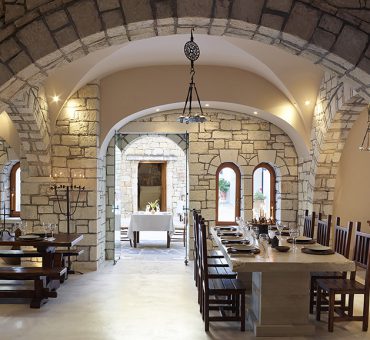White, delicate and charming, the sand lily that adorns the dunes of the Cretan beaches is a symbol of purity, everlasting beauty, and perseverance. Also known as sea daffodil, beach saffron, or lily of Knossos, the white sand lily (Pancratium maritimum) is a bulbous perennial, flowering from August to October each year. Its leaves are linear, its seeds are tiny and black and look like small charcoal pieces, and its white flowers have a pleasant, subtle fragrance that fills the air during hot summer nights.
The sea daffodil is native to Crete since prehistoric times. Minoans reserved a special admiration for this sand flower and used it several times in their art. Scenes of nature were common in Minoan art, especially of animal, sea, and plant life (lilies, irises, crocuses, roses, ivy, reeds, and more). The most famous work of Minoan art featuring the sand lily is, by all means, the Prince of the Lilies, a lively fresco depicting the figure of a young man wearing an elaborate head-dress, decorated with lilies and peacock feathers.
Unfortunately, in recent years the shrinking of the sea daffodil’s natural habitats due to touristic development and other human activities has limited its population to a few beaches all over the island. As a consequence, it is classified as endangered and protected by the Greek legislation.
Even today though, if you go out there to explore more remote, pristine beaches, away from the touristic areas of Crete, you’ll be amazed by the countless blossoming sand lilies dominating the golden sand dunes. But even if you are not into exploration, Potamos beach in Malia, only a 20-minute drive from Creta Maris Resort, is a beautiful untouched beach where sand lilies still grow and blossom each summer.
Take a photo or two for your Instagram, but do not cut off their flowers. They are too precious and rare to spare!



